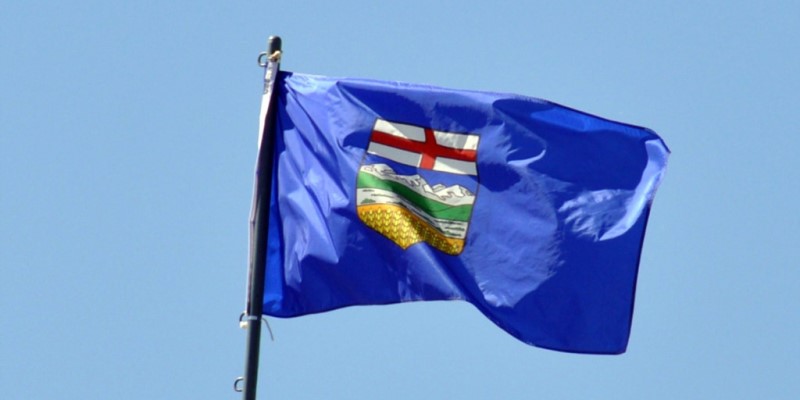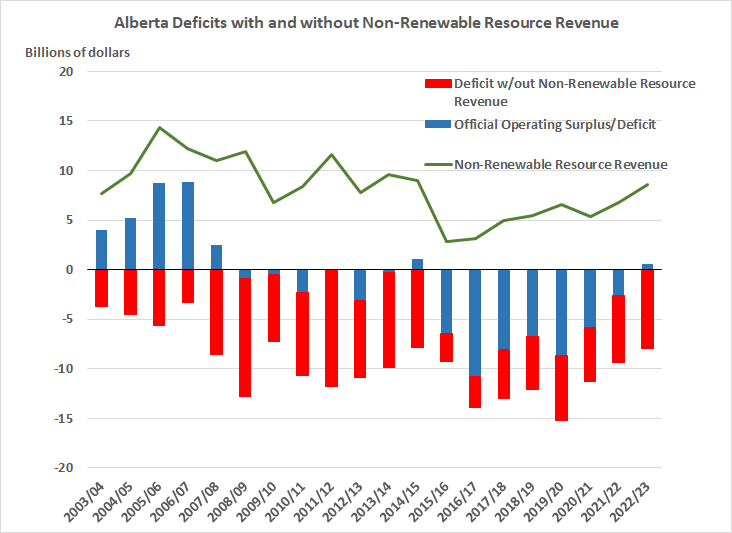Alberta ready for another ride on the Resource Revenue Roller-coaster

Alberta’s government finances are in shambles. Last year, the province ran a $6.7 billion operating deficit.
Even this deficit number, however, understates Alberta’s fiscal woes because last year the government collected $5.4 billion in non-renewable resource revenues and applied it to current spending. To use a common metaphor, the government is selling the family silver to pay today’s bills.
There’s nothing new about this approach to Albertan budgeting. As the chart below shows, if you excluded natural resource revenues, Alberta would have run uninterrupted budget deficits in recent years, even during good economic times. Since 2003, those deficits would have ranged from $3.7 billion to $13.9 billion.

Even when the province has balanced the budget during that period, it’s leaned heavily on the “resource revenue roller-coaster,” relying on this volatile source of revenue to paper over fiscal problems.
With plans for spending reductions announced in the recent budget, some may wonder whether the new fiscal plan will finally end the wild roller-coaster ride. The answer, in the near term at least, is no. The Kenney fiscal plan relies on resource revenues increasing by 58 per cent between 2018/19 and 2022/23, shaving $3.2 billion off the deficit.
In other words, hold on for another roller-coaster ride.
Solving Alberta’s fiscal problems means more than balancing the budget, it also means getting off the roller-coaster. This process won’t be over in 2022/23—not by a long shot. The provincial government must make many more hard choices in the years ahead.
Authors:
Subscribe to the Fraser Institute
Get the latest news from the Fraser Institute on the latest research studies, news and events.


